Passing combinations can be extremely revealing when it comes to how Premier League teams play. Who sees the ball a lot, and who do they pass to? Who receives lots of passes -- and, intriguingly in some cases, who doesn't?
We're still only six games into the season and therefore working with a small sample size, but already some trends are emerging.
Let's dig into what the top teams' most common passing connections tell us about their style.
Arsenal are distributing the ball more evenly
Key stat: Martín Zubimendi is involved in six of the Gunners' 15 most common combinations.
The most common passing combination on any team is almost guaranteed to be between two center backs who play together regularly. That makes sense, particularly for elite clubs, as they'll spend lots of time circulating the ball against teams sitting off them.
True to form, Arsenal's most common connections are William Saliba to Gabriel Magalhães (54 passes) and Gabriel back to Saliba (50 times). But the first non-defender to appear in the list is new signing Zubimendi, which feels significant.
There's no doubt the Spain midfielder already has a firm grip on this team's possession play, and what's notable is that he's distributing the ball much more evenly from left to right than Arsenal are perhaps used to.
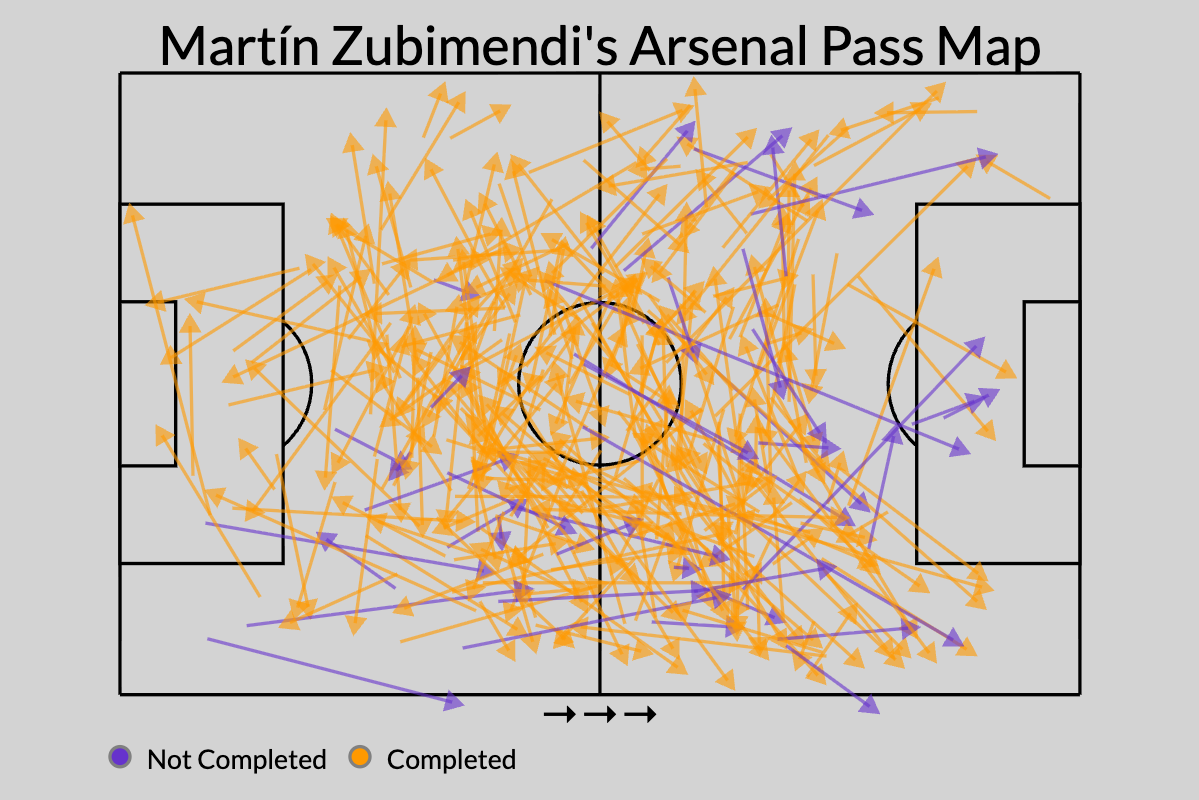
This is a team that have carried a heavy right-sided bias to their play in recent years, as the triumvirate of Bukayo Saka, Ben White and Martin Ødegaard was so influential. But with injuries affecting the right side, better options now available on the left, and Zubimendi able to service both flanks, that bias is diminishing.
The 26-year-old has sent a slightly higher number of passes (57) to a combination of Saliba and Cristhian Mosquera, who have shared duties on the right side of central defense, than to Gabriel on the left (48). Further up the pitch, he has passed more times to midfield teammate Declan Rice (45) on the left than any combination of Ødegaard, Mikel Merino and Eberechi Eze, who have all shared the third midfield slot.
There's a pleasing balance to this, and if you were thinking Arsenal's attack looks a bit more diverse, Zubimendi's distribution is a major component of that.
Chelsea's progressive outlet is Pedro Neto
Key stat: Neto has received 103 passes in the final third -- 36 more than anyone else.
Injuries and a squad shakeup over the summer have created a very different feel to this Chelsea team, who are without their best passing center back Levi Colwill (injured), and have had to deal with two separate injuries for attacking midfielder Cole Palmer already.
These situations present opportunity for others, though, and winger Neto has taken the opportunity to mark himself out as a key outlet in this team.
Chelsea's endless circulation of the ball in deeper areas means the Portugal international does not show up in the team's most common passing combinations, but when it comes to actually getting the ball forward, he suddenly appears.
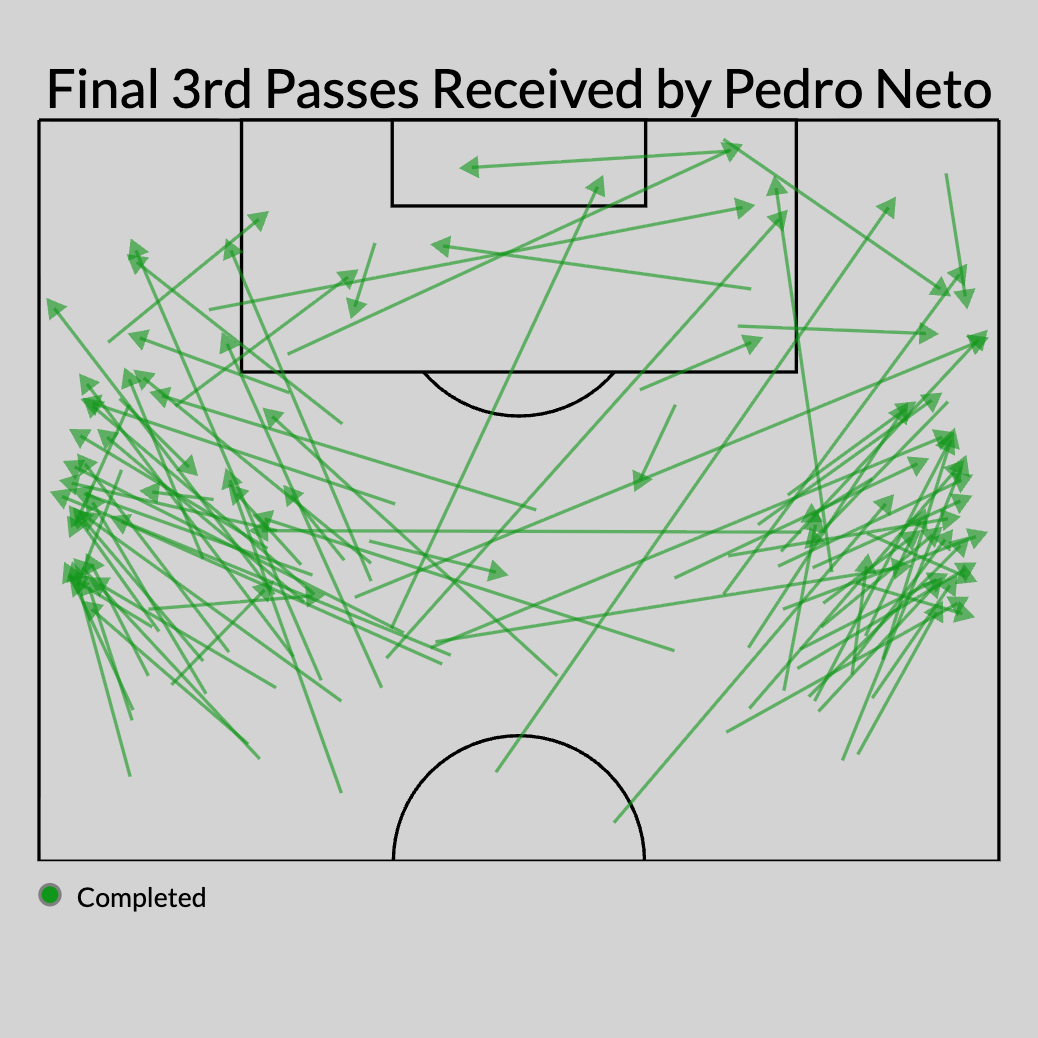
He has received 13 progressive passes from left back Marc Cucurella, 12 from midfielder Enzo Fernández and nine from defender Trevoh Chalobah. No other Chelsea player has hit double digits in this category.
Neto's 103 passes received in the attacking third leads the next-closest challengers, Fernández (67) and striker João Pedro (61), by a significant distance -- despite him playing 92 and 75 fewer minutes than them, respectively.
Liverpool need to get Mohamed Salah involved more
Key stat: Salah is involved in just two of Liverpool's top 30 most common passing combinations.
It has been a curious start to the season for a much-changed Liverpool team, who spent over £450 million this summer, as their major issues have been swept under the carpet somewhat because they've been churning out late wins -- until this weekend's 2-1 defeat to Crystal Palace, that is.
Losing focuses the eye on what's going wrong, rather than right. A concerning takeaway from Selhurst Park was that, once again, Salah did not feel particularly influential. The forward, who managed 29 goals and 18 assists from 38 games last season, didn't register a shot on target and did not complete a single dribble.
What's clear when you watch Liverpool is that he is uninvolved for long periods in games, and the data backs that up. He appears just twice in the team's top 30 most common combinations, as opposed to four times in last season's top 30.
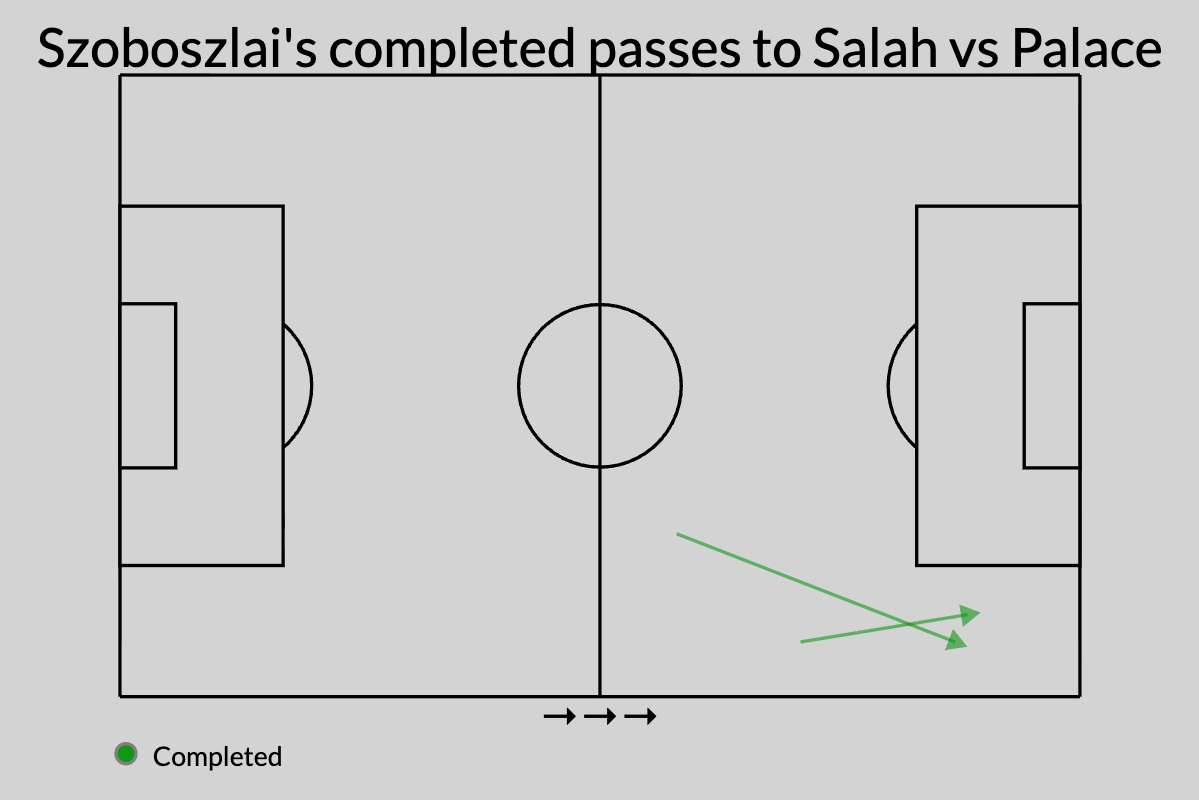
His biggest provider this season has been Dominik Szoboszlai, who has deputized at right back as well as in midfield, but he completed just two passes to the Egypt international last weekend. Florian Wirtz, the club's new £100 million midfielder in the No. 10 slot, has completed just 19 passes to Salah in 441 minutes.
Liverpool's game just isn't running through their best player right now, which is something coach Arne Slot is undoubtedly desperate to fix.
Manchester City are progressing through the wings
Key stat: Jérémy Doku is City's third- and fourth-most-common receiver.
At the top of the piece, we mentioned how center-back-to-center-back combinations typically lead top teams' passing charts. You'd especially believe that to be the case with Pep Guardiola's Manchester City -- but this season's numbers are stunningly low.
Rúben Dias' top connection is to Josko Gvardiol (37), while Gvardiol has sent 31 back. You'd expect this number to be around 70 or 80 by this point, but two things have thrown it off. First, there hasn't been much consistency to City's personnel at the back so far. And second, the remarkably defensive game plan in the 1-1 draw against Arsenal, in which Rodri's seven completed passes to Dias led the team, has affected a small sample size.
What is clear, though, is that City are using the wings to progress the ball. Doku's 32 passes received from Gvardiol and 31 from left back Nico O'Reilly ranks third and fourth in the team, while Oscar Bobb appears twice in the top 15, receiving 25 from midfielder Tijjani Reijnders and 23 from defender John Stones.
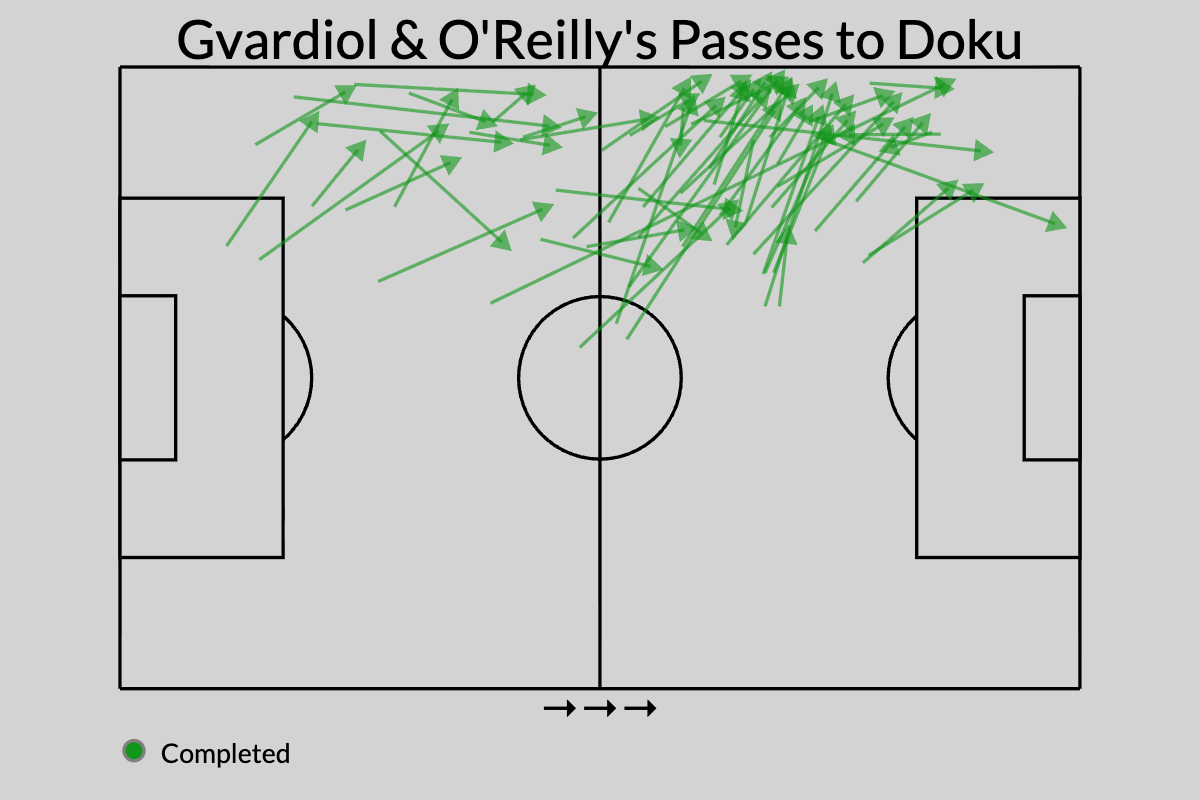
Doku and Bobb have registered four assists between them in six games, with Doku looking particularly bright.
Manchester United rely heavily on Luke Shaw
Key stat: Luke Shaw is involved in six of United's seven most common connections.
Manchester United's early-season possession play has carried an obvious left-sided bias. Shaw (LCB), Patrick Dorgu (LWB) and Bruno Fernandes (LCM) all play on that side and feature prominently in the Red Devils' top passing combinations -- especially Shaw.
The England international, who was a standard left back before moving to center back when Ruben Amorim arrived with his 3-4-2-1 formation, has passed 59 times to Fernandes, 50 times to Dorgu and 34 times back inside to center back Matthijs de Ligt. He has also received the ball from those players 41, 36 and 53 times respectively, making him the de facto hub of the team's passing game.
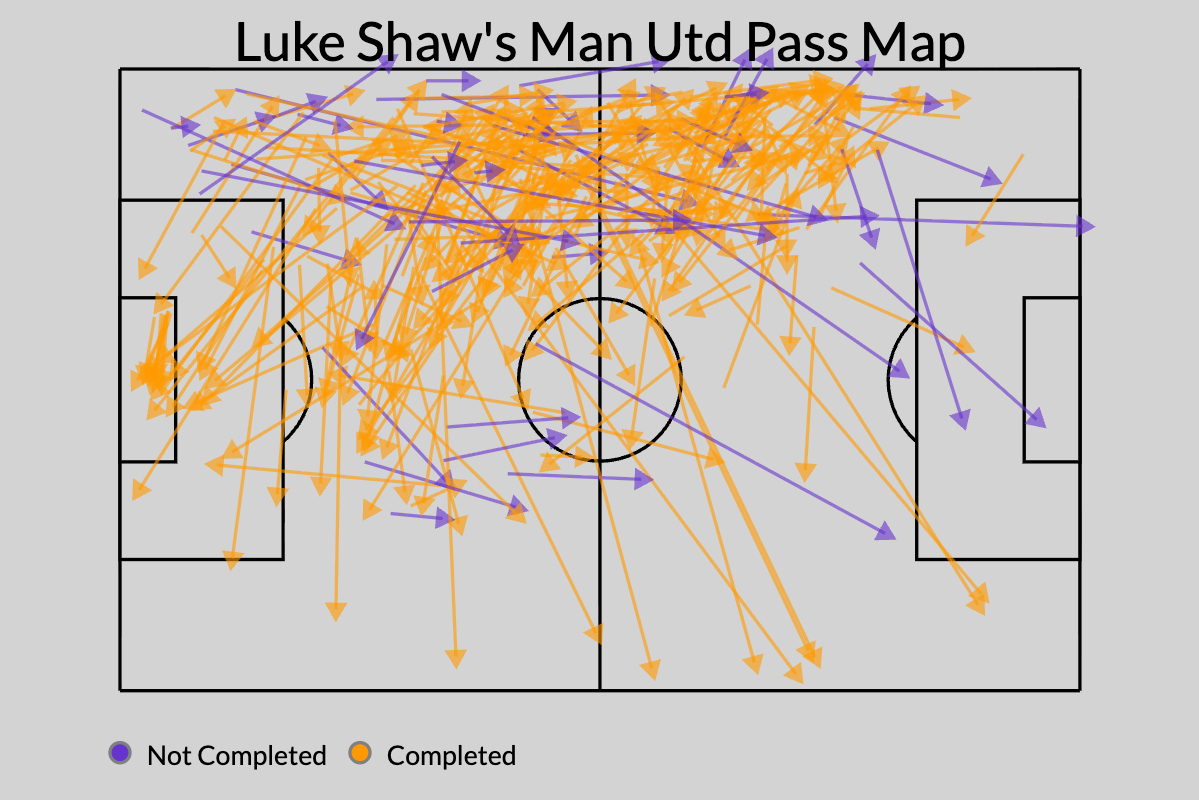
Amorim's system utilizes only two central midfielders, so it is by design that an outside center back is so involved in the passing game. In fact, they're tactically required to step up and become the third midfielder at times. In an ideal world this would be Lisandro Martínez, who excels at this, but is still recovering from a torn ACL suffered in February.
Does Amorim have one eye on the future in keeping the possession focus on the left side, or is it more a byproduct of the fact that United's best player, Fernandes, plays on that side?
Tottenham Hotspur have a right-sided bias
Key stat: Mohammed Kudus has been involved in more open-play sequences (182) than any other Spurs player.
Let's flip from left to right now and talk about Tottenham Hotspur's passing preferences, which have skewed fairly dramatically since the £50 million arrival of Kudus from West Ham this summer.
The Ghana winger has received 171 passes in the span of six games; only the regular back four, plus goalkeeper Guglielmo Vicario, have received more. Right back Pedro Porro loves passing to Kudus, successfully connecting 39 times. Twelve of those have been progressive passes, which is the highest tally on the team.
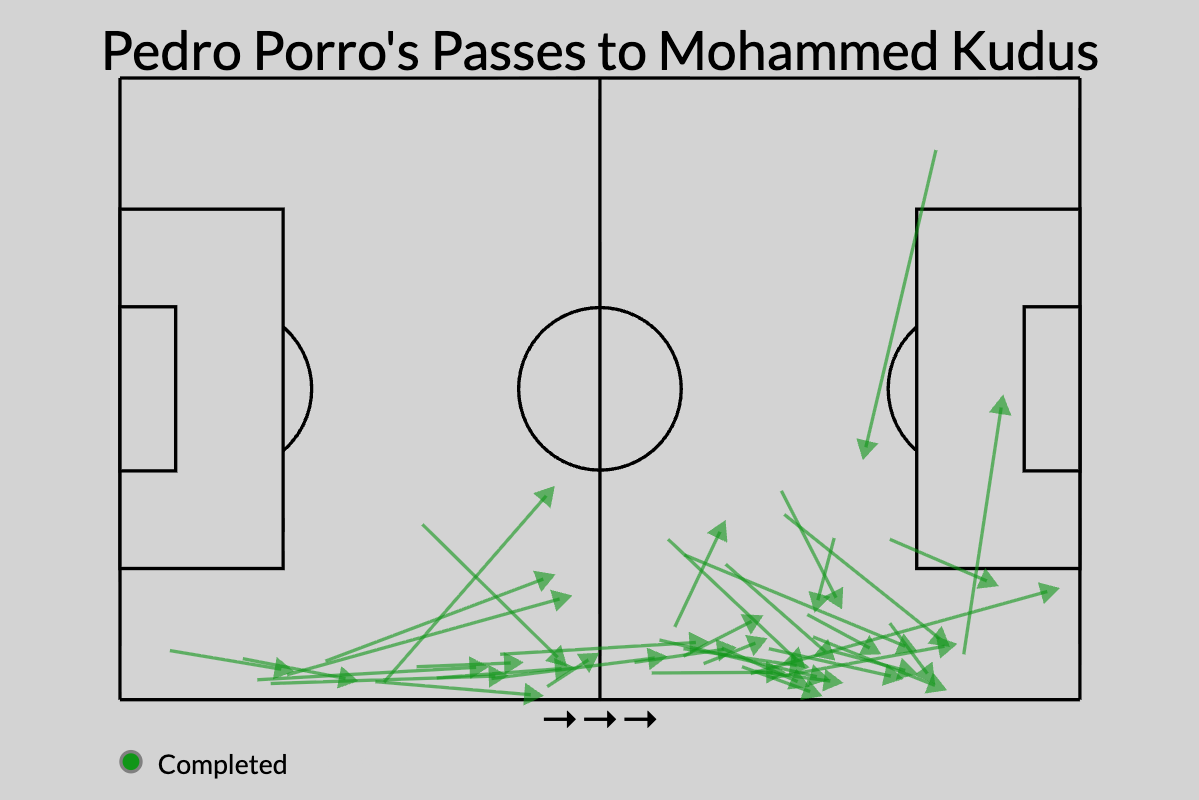
But what really hammers home Kudus' involvement is the fact he tops the team for involvement in open-play sequences (182) when playing out wide. For comparison, Szoboszlai (209) tops this statistic for Liverpool, Moisés Caicedo (202) for Chelsea and Rice (182) for Arsenal. The difference? They're all central midfield engine-room players.
New manager Thomas Frank has clearly encouraged the team to bring Kudus into the game as often as possible. It suits Spurs to work the ball up the right flank anyway, as Porro has always been a good distributor and Cristian Romero, who plays right center back, is by far the most talented line-breaking passer at the club.
